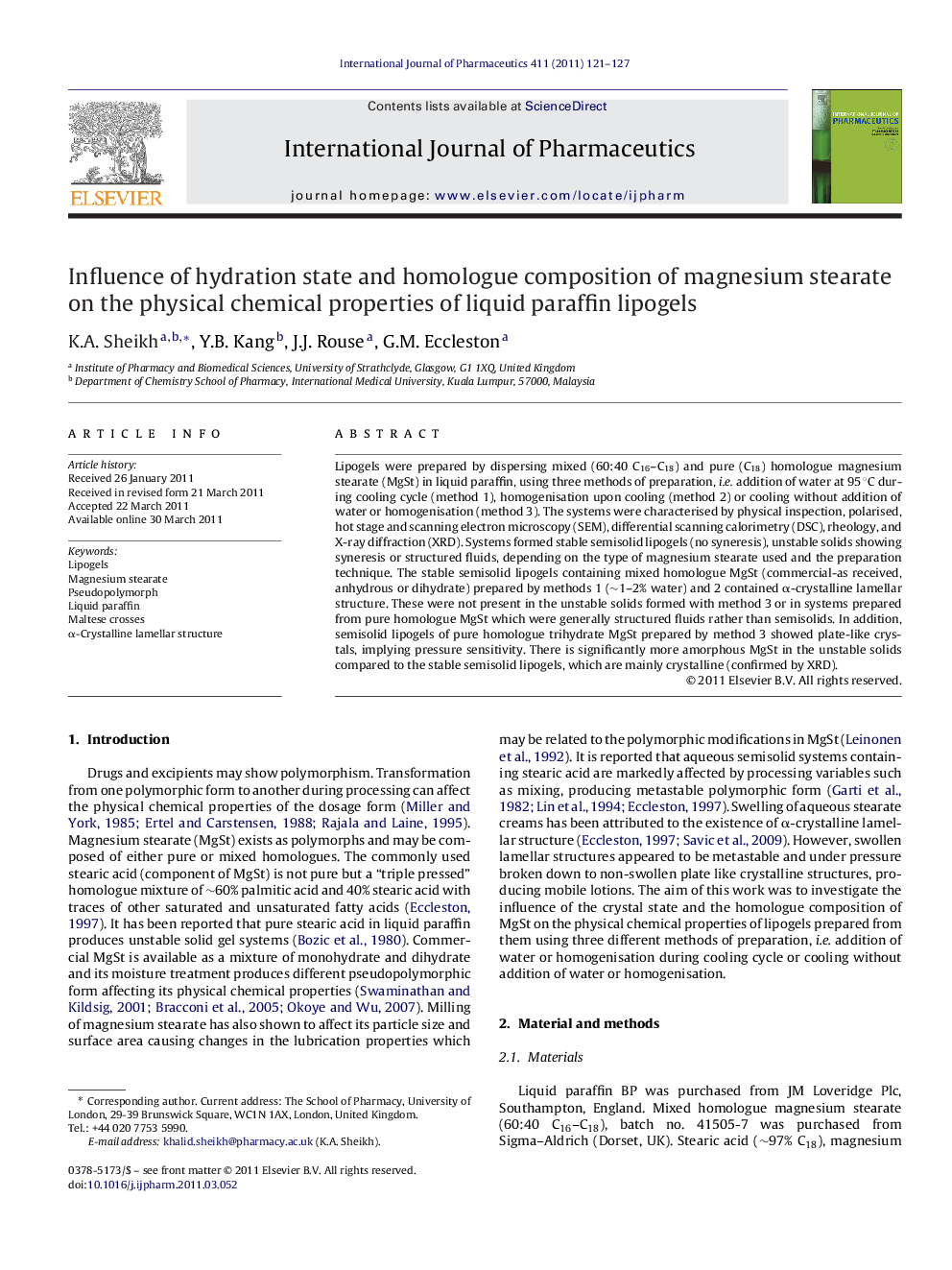| کد مقاله | کد نشریه | سال انتشار | مقاله انگلیسی | نسخه تمام متن |
|---|---|---|---|---|
| 2503568 | 1557431 | 2011 | 7 صفحه PDF | دانلود رایگان |

Lipogels were prepared by dispersing mixed (60:40 C16–C18) and pure (C18) homologue magnesium stearate (MgSt) in liquid paraffin, using three methods of preparation, i.e. addition of water at 95 °C during cooling cycle (method 1), homogenisation upon cooling (method 2) or cooling without addition of water or homogenisation (method 3). The systems were characterised by physical inspection, polarised, hot stage and scanning electron microscopy (SEM), differential scanning calorimetry (DSC), rheology, and X-ray diffraction (XRD). Systems formed stable semisolid lipogels (no syneresis), unstable solids showing syneresis or structured fluids, depending on the type of magnesium stearate used and the preparation technique. The stable semisolid lipogels containing mixed homologue MgSt (commercial-as received, anhydrous or dihydrate) prepared by methods 1 (∼1–2% water) and 2 contained α-crystalline lamellar structure. These were not present in the unstable solids formed with method 3 or in systems prepared from pure homologue MgSt which were generally structured fluids rather than semisolids. In addition, semisolid lipogels of pure homologue trihydrate MgSt prepared by method 3 showed plate-like crystals, implying pressure sensitivity. There is significantly more amorphous MgSt in the unstable solids compared to the stable semisolid lipogels, which are mainly crystalline (confirmed by XRD).
Figure optionsDownload as PowerPoint slide
Journal: International Journal of Pharmaceutics - Volume 411, Issues 1–2, 15 June 2011, Pages 121–127